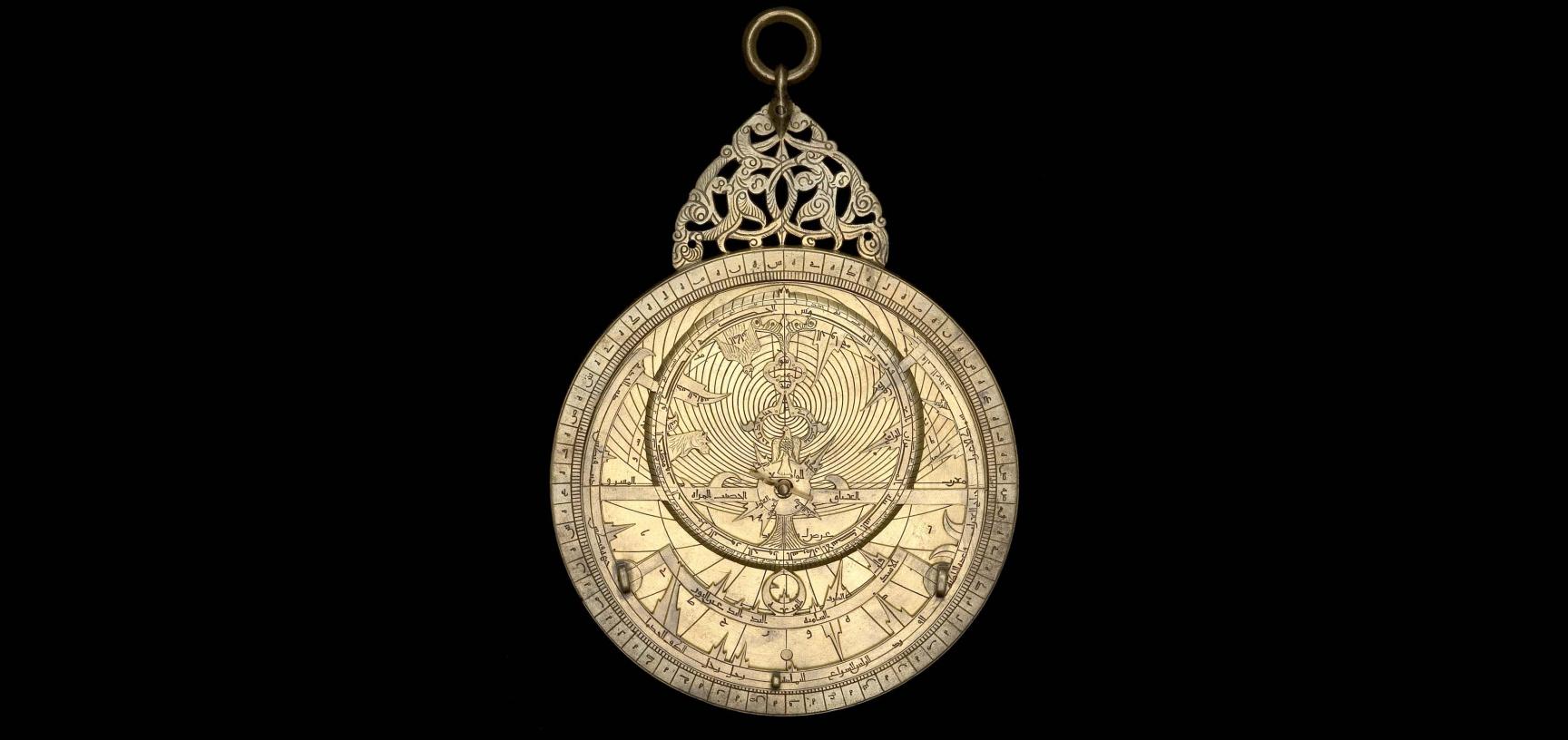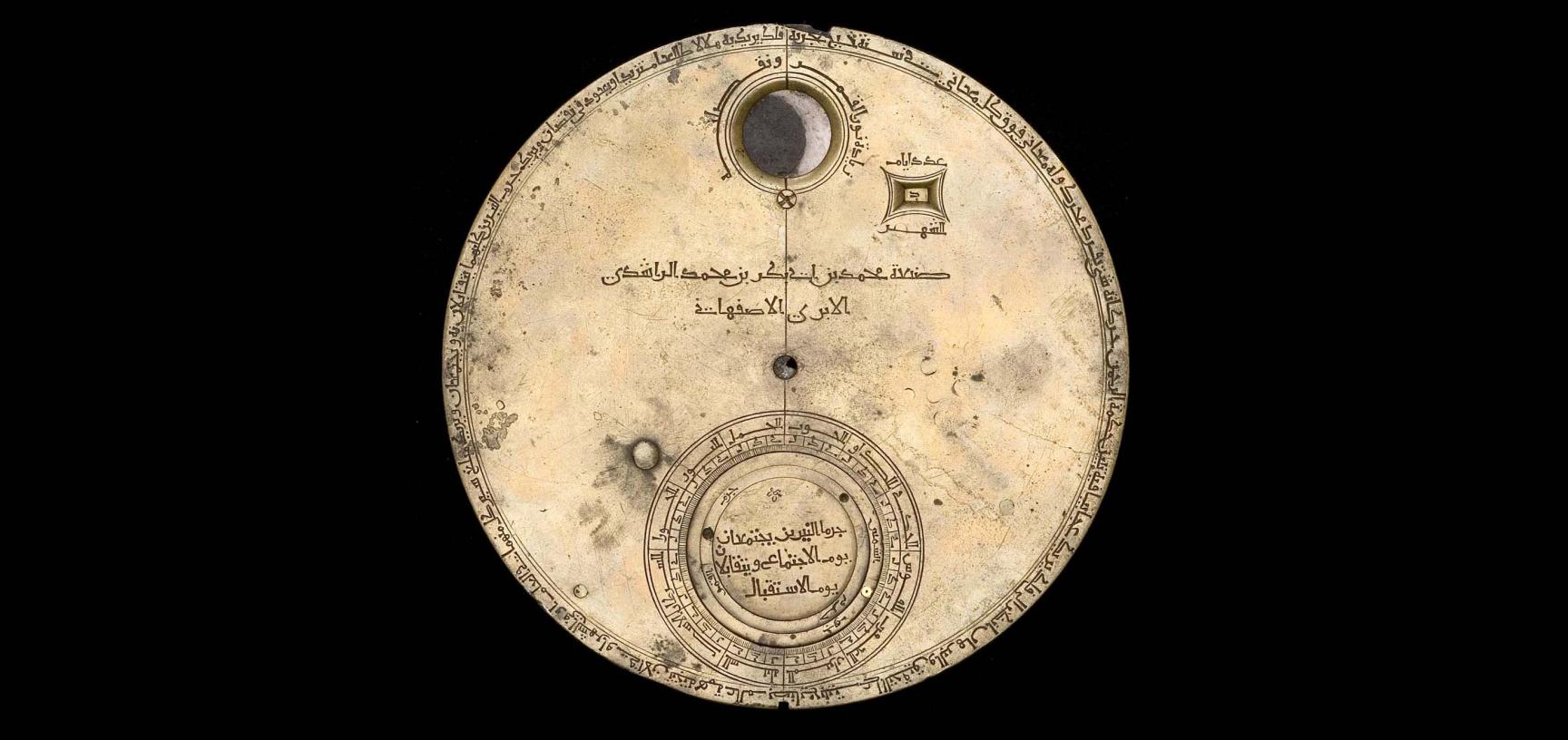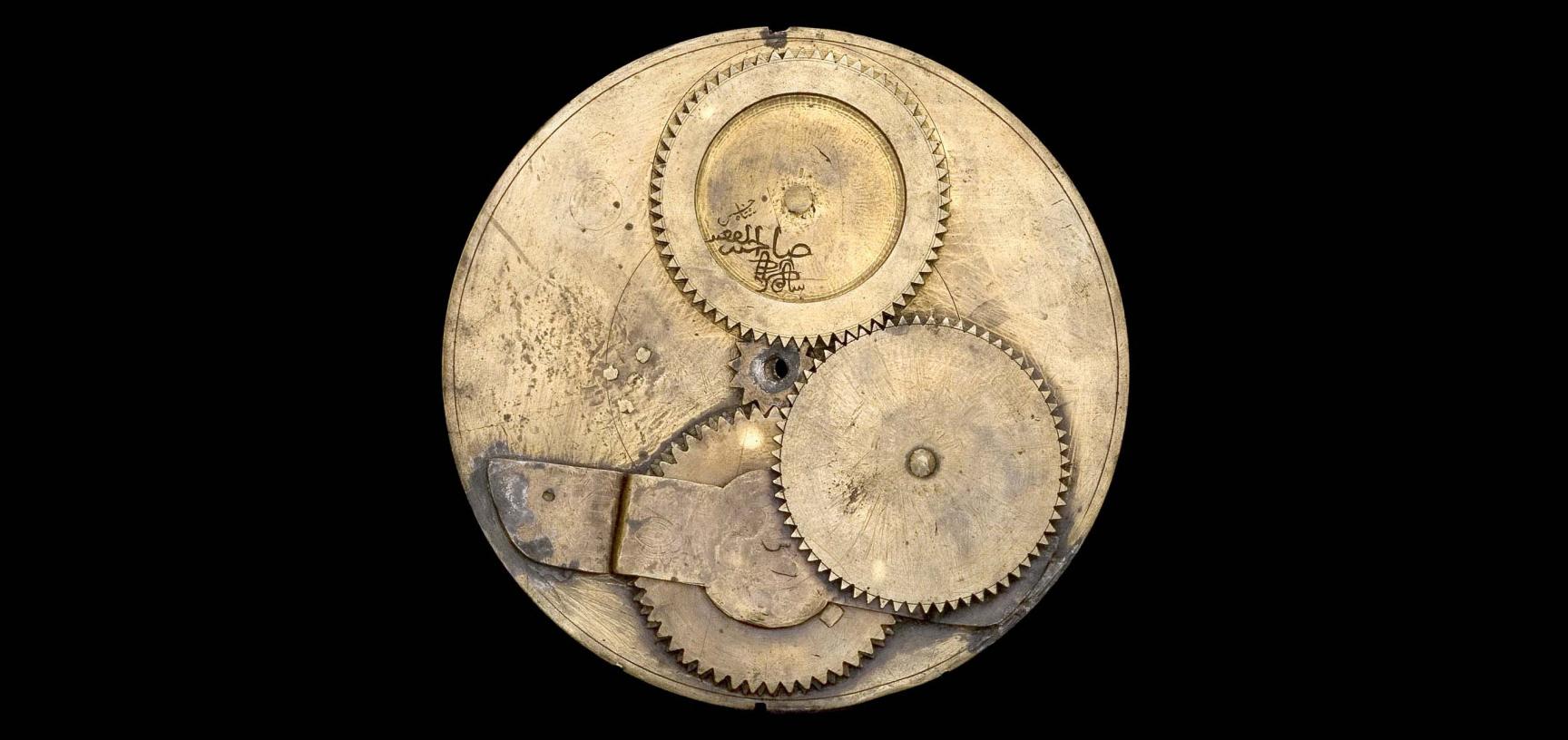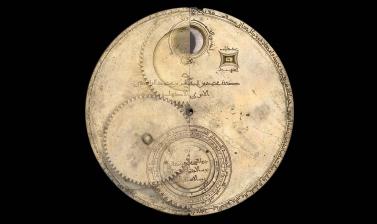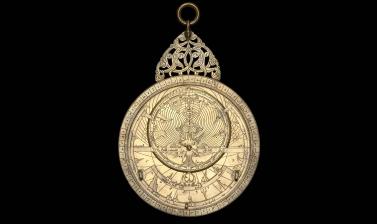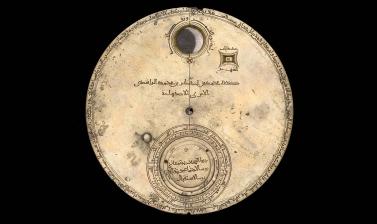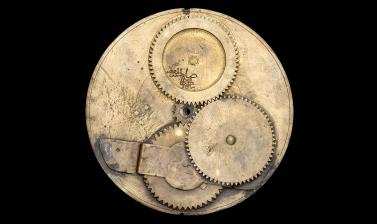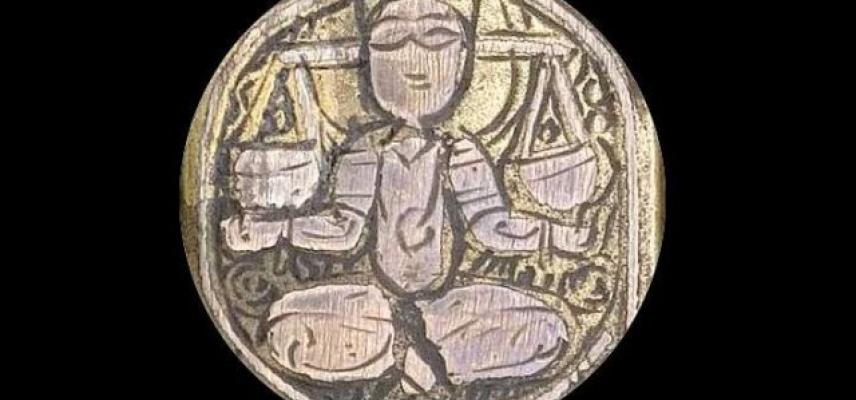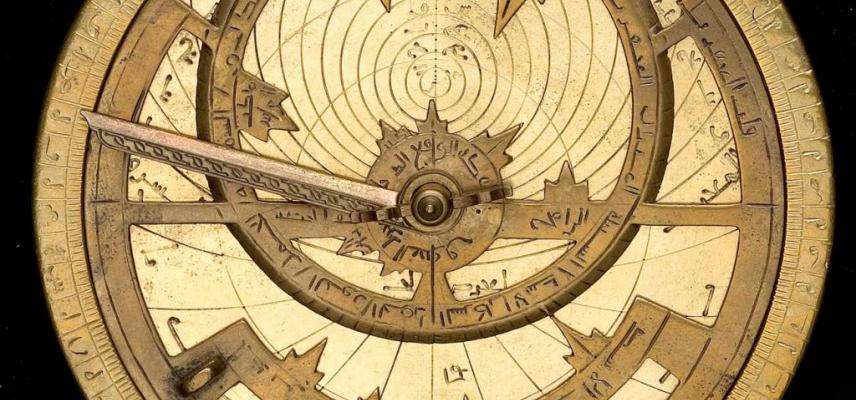Geared astrolabe
Wondrous wheelwork
Astrolabe with geared calendar
Muhammad Ibn Abi Bakr
Isfahan, 618 AH, 1221/2 CE
Inv. 48213
Our first thought of gearwheels might be in an industrial machine and associated with modernity, power and manufacturing, or perhaps a clock, with a longer history. But where did clocks come from? They developed from astronomical devices and this is the oldest complete geared machine in the world. It was made in the early 1200s in Isfahan (modern-day Iran) and is part of a largely lost tradition that goes all the way back to the more complex but fragmentary remains of the celebrated ancient Greek Antikythera mechanism.
An astrolabe on one side, the reverse carries three displays that are driven by the gearing hidden inside the body of the instrument (Our main image is a composite to show some of the wheelwork). At the top is a circular window showing the phase of the moon, and beside it a smaller rectangular window with the age of the moon in the days of its monthly cycle. Underneath are two rings, one for the sun and the other for the moon, showing their motions against the circle of the zodiac and revealing their conjunctions and oppositions, and thus the possibility of eclipses.
The inclusion of the internal gearing created an astrolabe considerably thicker than normal. This gave the maker an unusual opportunity for decoration: the rim of the instrument carries images of the zodiac signs in inlaid silver, separated by mysterious figures whose iconography has not been fully deciphered. The long inscription around the circumference of the back ends with: ‘Behold the disc! It will show you many of the wonders that prove the wisdom of the Merciful; its different motions are by virtue of a single mover, and it has meanings going beyond all meanings.’
See the geared mechanism animated
https://www.youtube.com/embed/OiUgBeb2vtk
How to use an astrolabe




